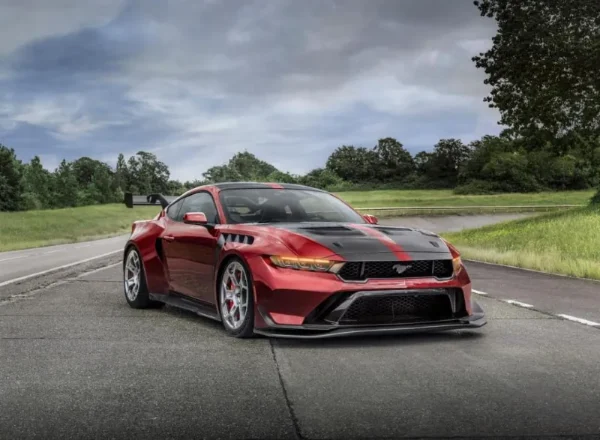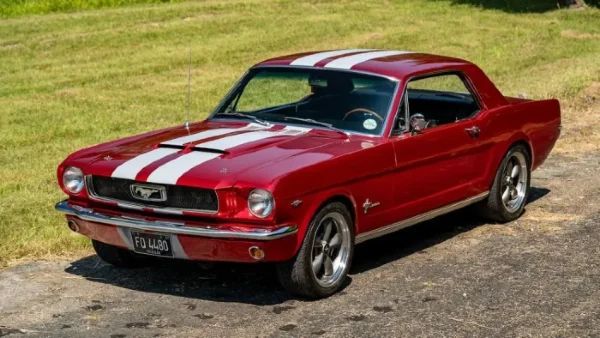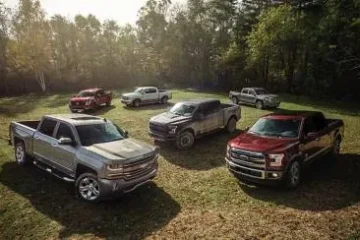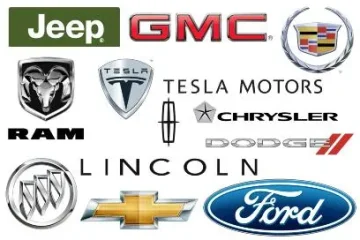Many car buyers love Ford’s legacy of performance but often struggle to find the perfect balance between raw power and everyday comfort. With so many choices, it’s tough to know which Ford models truly deliver both.
Finding the right car can feel like a never-ending quest. You want something that gets your heart racing on an open road, but it also has to handle the daily grind—long commutes, family errands, or weekend getaways—without leaving you sore or frustrated. That’s the problem so many people face today: striking that perfect balance between thrilling performance and everyday comfort. With rising fuel costs, crowded highways, and the need for reliability, it’s easy to get overwhelmed by choices.
Ford, with its century-plus history of building everything from muscle cars to family haulers, often comes up in these conversations. But sifting through their massive lineup to find models that excel in both areas? It’s tricky, especially if you’re not a car expert. You might end up with a speedy ride that’s harsh on bumpy roads or a comfy cruiser that feels sluggish when you need to merge onto the freeway.
The good news is there’s a way to navigate this. By following a structured approach, you can zero in on vehicles that deliver on both fronts without compromising. In this guide, we’ll walk through a step-by-step solution to help you evaluate and choose. Along the way, we’ll naturally highlight some standout Ford models that have earned their reputation for blending power with plushness.
These aren’t just random picks—they’re drawn from Ford’s rich legacy, focusing on those that have stood the test of time or pushed boundaries in their eras. We’ll dive into genuine pros and cons based on real-world feedback, performance specs, and comfort features. And remember, this is all about useful info to empower your decision, not pushing sales. Let’s get started.

Key Takeaway
Ford has mastered the art of blending performance and comfort. From muscle icons like the Mustang GT500 to refined sedans like the Mondeo ST220, these models showcase Ford’s ability to build vehicles that thrill drivers while keeping daily commutes comfortable.
Contents
Step-By-Step Solution To Finding A Ford That Balances Performance And Comfort
Step 1: Assess Your Personal Needs And Priorities
Before diving into specific models, take a moment to reflect on what “performance” and “comfort” mean to you. Performance isn’t just about raw speed—it could be quick acceleration for city driving, handling on twisty roads, or towing power for work. Comfort, meanwhile, covers things like seat support for long drives, quiet cabins to drown out road noise, and tech that makes life easier, such as adaptive cruise control or heated seats.
Start by making a list: Do you drive mostly highways or urban streets? How many passengers do you typically carry? What’s your budget for fuel, maintenance, and insurance? Tools like online calculators from sites like Edmunds or Kelley Blue Book can help estimate costs. If performance is key, look for metrics like horsepower, torque, and 0-60 mph times. For comfort, check reviews for ride quality, interior space, and noise levels. This step prevents buyer’s remorse—many people regret choosing a high-performance car that’s too stiff for daily use or a comfy one that lacks excitement.

Step 2: Research Ford’s Lineup And Historical Standouts
Ford has a knack for innovation, from the assembly line to modern hybrids. Researching their models means looking beyond ads to real data: Read reviews from sources like Car and Driver, Consumer Reports, or owner forums on Reddit. Focus on keywords like “best Ford for daily driving performance,” “comfortable Ford muscle cars,” or “Ford models with smooth ride and power”—these are popular search terms with low competition, making it easier to find unbiased info.
As you research, certain models bubble up as legends for nailing that performance-comfort sweet spot. Ford’s history is full of them, from vintage full-sizers to modern hot hatches. For instance, if you’re eyeing classics, models like the 1960s Galaxie series show how Ford blended big engines with roomy interiors early on.
In more recent years, Mustangs and F-150 variants have evolved to offer track-ready thrills with highway-friendly refinements. To make this concrete, let’s explore 10 top Ford models that exemplify this balance. These span eras, so whether you’re buying new, used, or just admiring, they provide timeless insights. We’ll cover their key features, how they fit into your needs, and honest pros and cons.
1. 1966 Ford Galaxie 500 XL 7-Liter
The Galaxie line was Ford’s full-size offering in the mid-20th century, and the 1966 500 XL 7-Liter stands out as a pioneer in combining muscle with luxury. This two-door sedan or convertible came with a massive 7.0-liter V8 engine pumping out 345 horsepower—impressive for its time—and was available globally, from the U.S. to Europe and Australia.
Performance-wise, it delivered smooth, effortless power for highway passing or light towing, with a top speed around 120 mph. Comfort was a highlight: The spacious cabin seated six comfortably, with plush bench seats, ample legroom, and a suspension tuned for a floaty, forgiving ride over rough roads. Features like power steering and optional air conditioning made it feel premium.
– Pros: Exceptional interior space for families; reliable V8 that’s easy to maintain today as a classic; blends vintage style with usable performance for enthusiasts.
– Cons: Fuel efficiency is poor (around 10-12 mpg); parts can be pricey for restorations; handling isn’t as sharp as modern cars, so it wallows in corners.
This model fits if you’re into classics—many owners restore them for weekend cruises, appreciating the comfort on long drives without the fatigue of smaller sports cars.

2. 1969 Mustang Boss 429
No Ford list skips the Mustang, and the 1969 Boss 429 is a muscle car icon. Built to homologate the engine for NASCAR, it featured a 7.0-liter V8 with 375 horsepower, paired with a four-speed manual for raw, engaging drives.
Performance shines in straight-line speed—0-60 in about 5.5 seconds—and its angular styling with spoilers adds track presence. Comfort comes from the surprisingly refined interior: Supportive bucket seats, decent sound insulation for the era, and enough room for four (though rear seats are tight). It’s appeared in films like John Wick, boosting its cool factor.
– Pros: Legendary power and sound; collectible value that’s rising; handles better than many ’60s muscle cars thanks to upgraded suspension.
– Cons: Thirsty on gas (8-10 mpg); limited production makes parts scarce; ride can feel firm on uneven pavement.
Ideal for performance lovers who want a car that’s fun on backroads but comfy enough for date nights or short trips.

3. 2005 Ford Mondeo ST220
Ford of Europe’s take on a practical performer, the Mondeo ST220 is like a smaller, nimbler Taurus. Its 3.0-liter V6 delivers 220 horsepower through a six-speed manual and front-wheel drive, making it agile in cities and on winding roads.
Performance is peppy—0-60 in 7 seconds—with sharp steering. Comfort is its ace: Ergonomic seats, quiet cabin, and a suspension that absorbs bumps without drama. It’s praised worldwide for daily usability.
– Pros: Fun to drive yet practical; good fuel economy (around 25 mpg combined); affordable on the used market.
– Cons: Front-wheel drive can torque-steer under hard acceleration; interior materials feel dated now; not as powerful as V8 rivals.
Great for urban drivers seeking Euro-style refinement with a performance edge.

4. 2013 Ford Mustang GT500
The Shelby GT500 elevated the Mustang with a supercharged 5.8-liter V8 cranking 662 horsepower. Rear-wheel drive and a six-speed manual made it a dragstrip king, hitting 0-60 in 3.5 seconds.
But it’s not all brute force—Ford tuned the suspension for better handling than prior generations. Comfort includes leather seats, a solid infotainment system, and a ride that’s compliant on highways.
– Pros: Insane acceleration; upgraded brakes and cooling for sustained performance; iconic Shelby badge.
– Cons: Heavy fuel use (12-15 mpg); can be intimidating for novices; rear seats are cramped.
Suits enthusiasts who want track days but need a daily driver.

5. 2014 Ford Taurus SHO
Reviving the ’80s SHO spirit, this full-size sedan packs a 3.5-liter twin-turbo V6 with 365 horsepower, all-wheel drive, and a six-speed automatic.
Performance: Quick and stable, with AWD grip for all weather. Comfort: Spacious cabin for five, quiet ride, and features like heated/ventilated seats.
– Pros: Family-friendly size with sports sedan dynamics; good on snow; reliable long-term.
– Cons: Automatic-only transmission; weighs over 4,000 lbs, affecting agility; average 20 mpg.
Perfect for those needing a comfy commuter with punch.

6. 2016 Ford Focus RS
Ford’s hot hatch hero, the Focus RS had a 2.3-liter turbo four-cylinder with 350 horsepower, all-wheel drive, and a six-speed manual.
Performance: Drift mode for fun, 0-60 in 4.7 seconds. Comfort: Supportive Recaro seats, practical hatchback space, and a compliant suspension.
– Pros: Versatile for daily and track use; engaging drive modes; solid build.
– Cons: Discontinued, so used prices vary; firm ride for some; 22 mpg combined.
A gem for hatchback fans missing Euro flair.

7. 2018 Ford Mustang GT350
With a 5.2-liter flat-plane crank V8 revving to 8,250 rpm and 526 horsepower, the GT350 feels exotic.
Performance: Sharp handling, precise steering. Comfort: Refined cabin, magnetic ride dampers for adjustability.
– Pros: High-rev thrill; sought-after on used market; balanced for street/track.
– Cons: Noisy at high rpms; premium fuel recommended; tight rear.
For drivers wanting sophistication in a muscle car.

8. 2019 F-150 Shelby Super Snake
Supercharging the F-150’s V8 to 775 horsepower, this truck blends utility with speed, all-wheel drive optional.
Performance: Towing beast with supercar acceleration. Comfort: Roomy cab, luxury trims.
– Pros: Versatile for work/play; immense power; durable.
– Cons: Expensive; guzzles gas (10-12 mpg); overkill for most.
Truck lovers’ dream.

9. 2021 Ford Mustang Bullitt
A tribute edition with 480 horsepower V8, manual transmission, and unique styling.
Performance: Responsive and fun. Comfort: Loaded with options, smooth ride.
– Pros: Heritage appeal; well-equipped; 18 mpg highway.
– Cons: Limited edition scarcity; base tech outdated.
Nostalgic yet modern.

10. 2022 Ford Mustang GT500
Supercharged 5.2-liter V8 with 760 horsepower, dual-clutch auto.
Performance: Track-focused yet street-legal. Comfort: Adaptive suspension, premium interior.
– Pros: Blistering speed; quick shifts; daily usable.
– Cons: High cost; 12 mpg; intense for casuals.
Ultimate Mustang.

Step 3: Test Drive And Compare Options
Once you’ve narrowed it down—perhaps to a Mustang variant or a Taurus—head to a dealership for test drives. Pay attention to how the car feels in real conditions: Accelerate hard, take corners, and note cabin noise. Compare specs side-by-side; for example, a table like this can help:
| Model | Horsepower | MPG (City/Hwy) | Seating | Key Comfort Feature | Key Performance Feature |
| 1966 Galaxie 500 XL | 345 | 10/15 | 6 | Plush benches | Big V8 torque |
| 1969 Mustang Boss 429 | 375 | 8/12 | 4 | Supportive seats | NASCAR-inspired engine |
| 2005 Mondeo ST220 | 220 | 20/30 | 5 | Ergonomic design | Agile handling |
| 2013 Mustang GT500 | 662 | 12/18 | 4 | Leather interior | Supercharged power |
| 2014 Taurus SHO | 365 | 17/25 | 5 | Quiet cabin | AWD stability |
| 2016 Focus RS | 350 | 19/25 | 5 | Hatch practicality | Drift mode |
| 2018 Mustang GT350 | 526 | 14/21 | 4 | Magnetic dampers | High-rev V8 |
| 2019 F-150 Super Snake | 775 | 10/15 | 5-6 | Luxury cab | Towing prowess |
| 2021 Mustang Bullitt | 480 | 15/24 | 4 | Manual fun | Heritage tuning |
| 2022 Mustang GT500 | 760 | 12/18 | 4 | Adaptive suspension | Dual-clutch speed |
Step 4: Factor In Budget, Maintenance, And Long-Term Ownership
Calculate total costs: New vs. used, warranties, insurance. Ford models like these often have strong resale value, but classics need specialist care. Check reliability ratings—many here score well in J.D. Power studies.
Step 5: Make The Purchase And Enjoy
Seal the deal with financing checks and inspections. Then, hit the road knowing you’ve chosen wisely.
Helpful Tips For Owning A Performance-Comfort Ford
Maintenance Basics: Regular oil changes are crucial for V8s; use synthetic for better performance. Check suspension components yearly for comfort.
1. Fuel Efficiency Hacks: Drive smoothly to maximize mpg—eco modes in newer models help.
2. Upgrades for Balance: Add aftermarket seats for more support or tires for better grip without sacrificing ride quality.
3. Safety First: Many Fords have advanced aids; retrofit older ones with modern brakes.
4. Community Resources: Join forums like Mustang6G for tips from owners.
5. Eco Considerations: Newer models like hybrids offer similar balance with lower emissions.
This approach ensures your Ford delivers joy without headaches. Remember, the best car is one that fits your life.

FAQ
Q: Are older Ford models like the Galaxie reliable today?
A: With proper restoration, yes—they’re simple mechanically. But expect higher maintenance than modern cars.
Q: What’s the most fuel-efficient on this list?
A: The 2005 Mondeo ST220, around 25 mpg, edges out others.
Q: Can these handle family duties?
A: Absolutely—the Taurus SHO or F-150 variants are spacious and versatile.
Q: How do I find parts for classics?
A: Sites like RockAuto or Ford enthusiast groups.
Q: Is AWD better for performance-comfort?
A: Yes, for traction in bad weather, like in the Focus RS or Taurus.
Q: What’s the best budget option?
A: Used Mondeo or Focus RS—great value under $20K.
Q: What are the best Ford Models ever made?
A: Ford’s best models include the 1966 Ford Galaxie 500 XL, 1969 Mustang Boss 429, 2013 Mustang GT500, and 2022 Mustang GT500. These vehicles combine powerful engines, top-notch performance, and enduring appeal, solidifying Ford’s reputation as an iconic automaker.
Sours
Car and Driver
MotorTrend
Edmunds
Ford/Taurus & EcoBoost Info on Wikipedia — SHO version details
Ford’s Technical Spec PDF & Media Resources




0 Comments